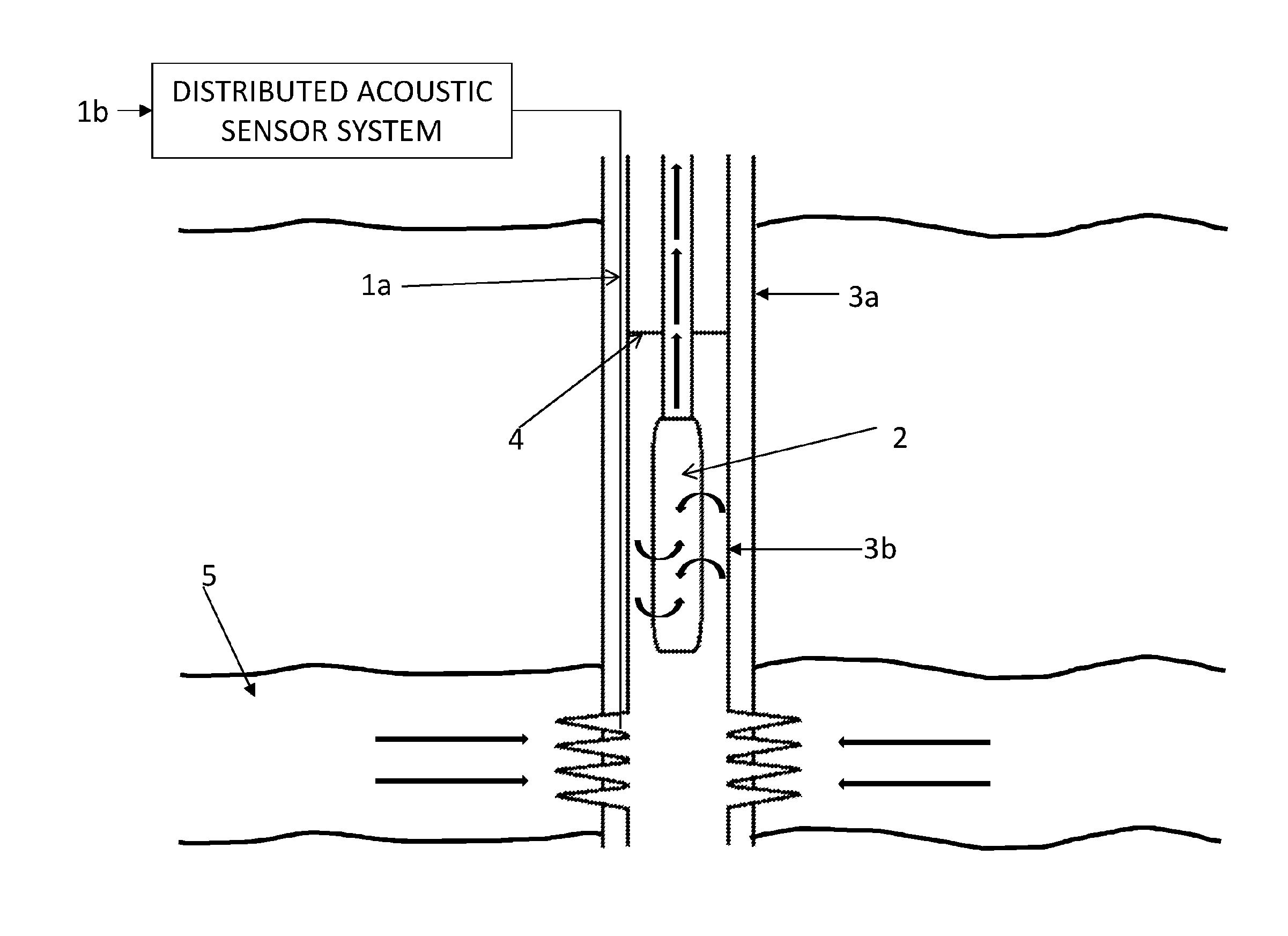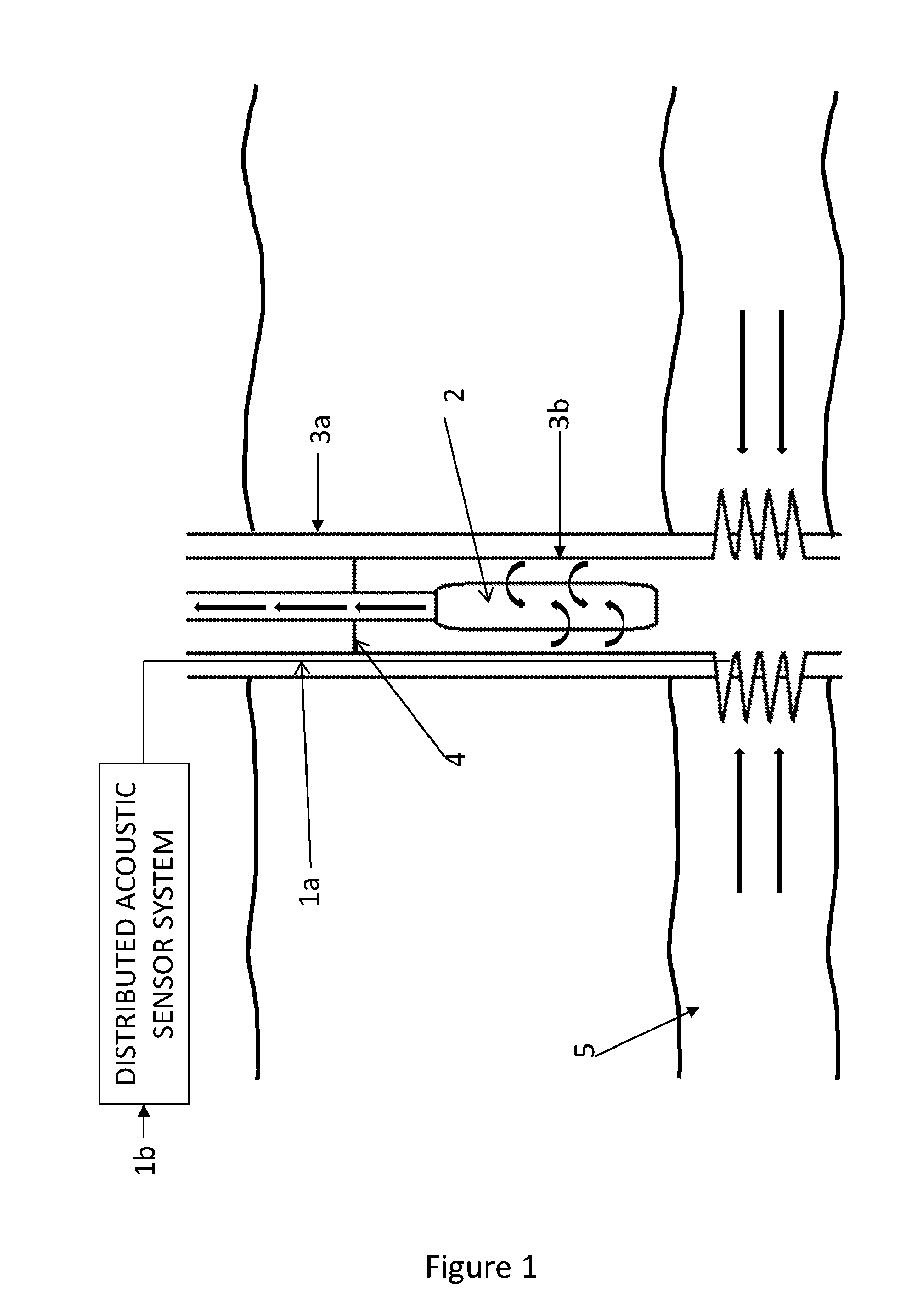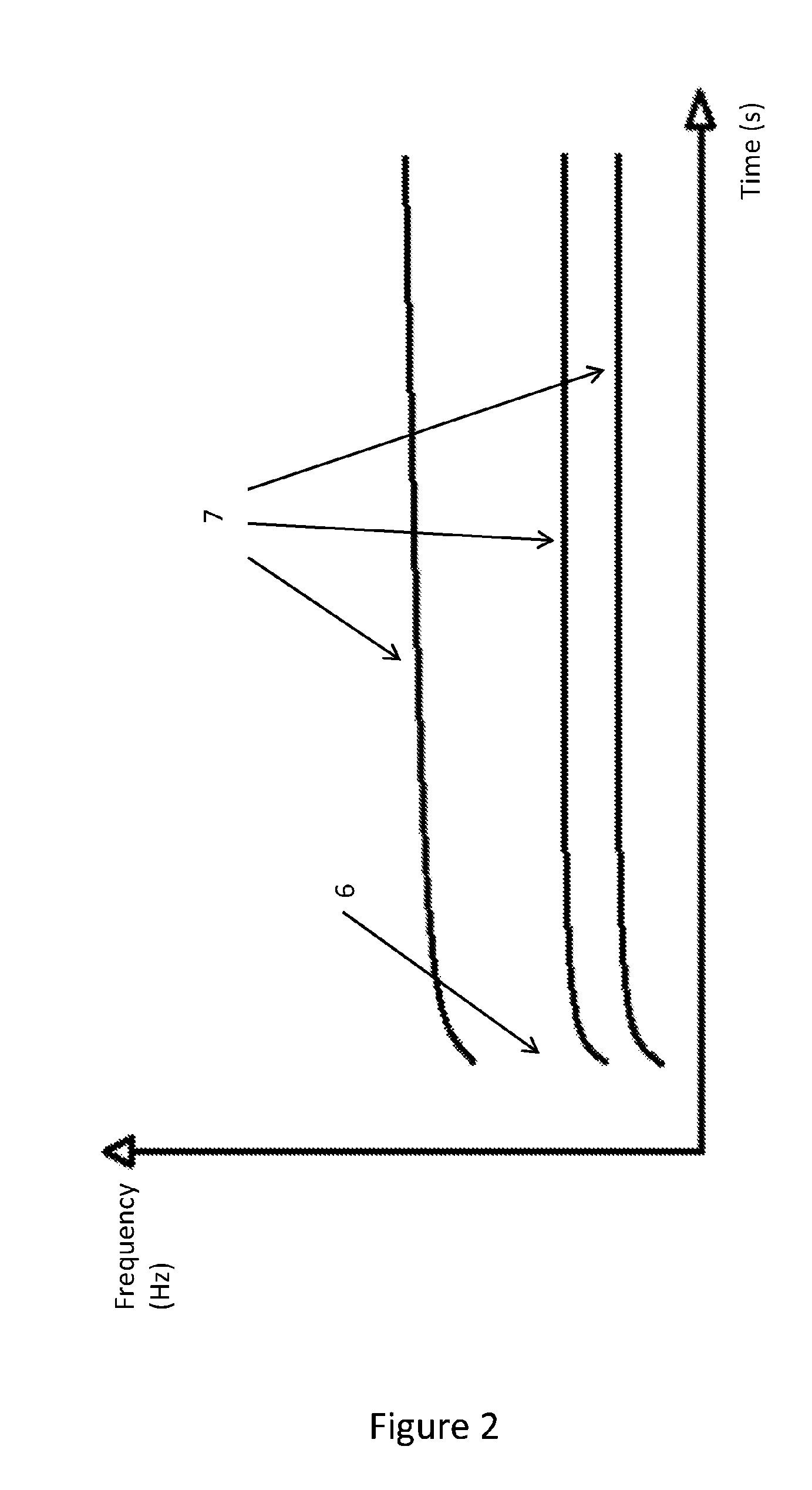Submersible Pump Monitoring
a submersible pump and monitoring technology, applied in the direction of liquid/fluent solid measurement, survey, fluid removal, etc., can solve the problems of high pump damage, high maintenance cost, time-consuming and disruptive to the operation,
- Summary
- Abstract
- Description
- Claims
- Application Information
AI Technical Summary
Benefits of technology
Problems solved by technology
Method used
Image
Examples
Embodiment Construction
[0036]In a particular embodiment of the invention, described here in order to provide an example of a preferred implementation of the present invention, an optical fibre distributed acoustic sensor is provided along an ESP activated well in order to detect the propagation of acoustic waves generated by the ESP, and thus monitor the annulus fluid level of the well, as will be described. In use, as known in the art, an ESP is submerged into the production fluid and used to increase the flow rate of production fluids. The ESP decreases the pressure at the bottom of the well by increasing the drawdown in order to artificially ‘lift’ the production fluid from its reservoir to the surface.
[0037]FIG. 1 illustrates a typical deployment scenario for embodiments of the present invention. Here, a wellbore 3a has been drilled down into gasoline producing rock 5, and a casing 3b installed therein. During completion of the wellbore 3a, a submersible pump, such as an electrical submersible pump (E...
PUM
 Login to View More
Login to View More Abstract
Description
Claims
Application Information
 Login to View More
Login to View More - R&D
- Intellectual Property
- Life Sciences
- Materials
- Tech Scout
- Unparalleled Data Quality
- Higher Quality Content
- 60% Fewer Hallucinations
Browse by: Latest US Patents, China's latest patents, Technical Efficacy Thesaurus, Application Domain, Technology Topic, Popular Technical Reports.
© 2025 PatSnap. All rights reserved.Legal|Privacy policy|Modern Slavery Act Transparency Statement|Sitemap|About US| Contact US: help@patsnap.com



